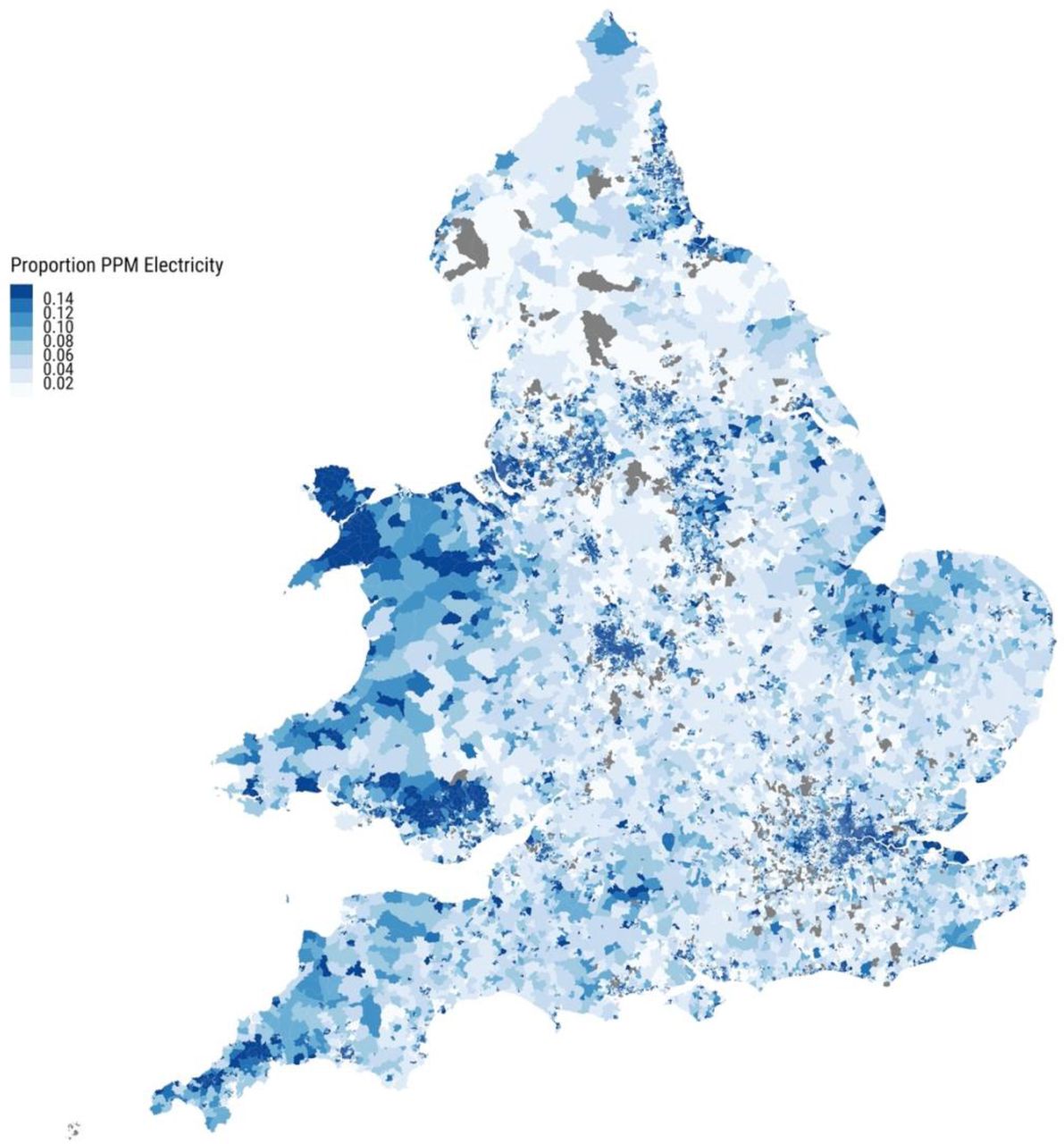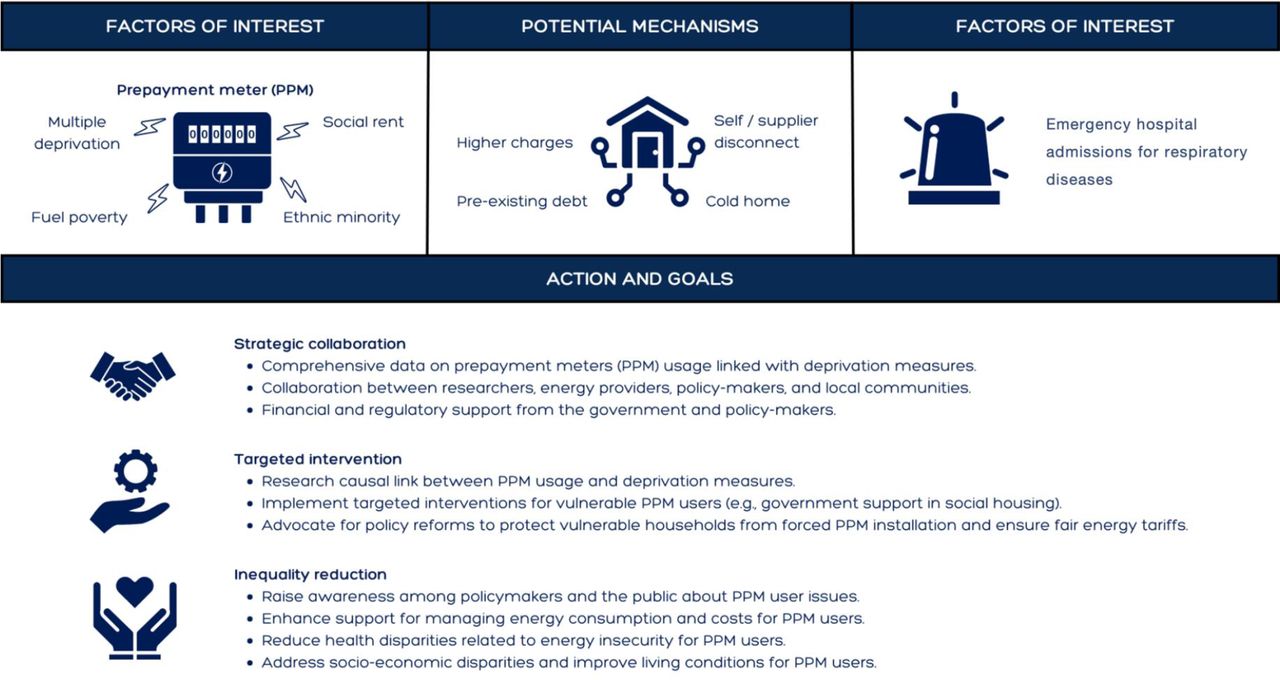A new study by Oxford Population Health’s Demographic Science Unit and the Leverhulme Centre for Demographic Science reveals that prepayment meter users in England and Wales are more likely to be exposed to higher levels of social, economic and health deprivation.
Published yesterday in the British Medical Journal of Epidemiology and Community Health, the study finds that prepayment meters are concentrated in areas with multiple types of deprivation and higher levels of emergency respiratory hospital admissions.
The study combined multiple regional data and census estimates from England and Wales with various statistical methods to determine the prevalence of prepayment meters in different areas and their association with multiple types of deprivation.
Dr Xuejie Ding, co-author and Postdoctoral Researcher at the Demographic Science Unit and Leverhulme Centre for Demographic Science said, ‘In July 2023, the UK government prevented energy firms from charging a premium for prepayment meter usage, following concerns raised by advocacy groups and the media about their prevalence among vulnerable populations. This study provides concrete evidence confirming these claims and identifies the most affected demographic groups.’
On average, the study found that one in ten households in England and Wales had prepayment meters. Wales had a higher prevalence of these meters, with 14% of households using them, especially in Cardiff and North Wales. Around 11% of households in England had prepayment meters, which were more spread out across regions and frequently found in major cities such as London, Birmingham and Manchester.

Area) percentages of prepayment electricity meters in
England and Wales
In both England and Wales, a higher prevalence of prepayment meters is strongly associated with lower income, receipt of employment benefits, ethnic minorities, lower education levels, and higher income deprivation affecting children and the elderly, and households in social rental properties.
The use of prepayment meters is also associated with adverse effects on health, which may be attributed to several potential mechanisms. These include increased energy costs, worsening financial difficulties, accumulating debt, disconnection from the energy supply due to financial constraints, and health problems resulting from living in a cold home after disconnection.
Professor Melinda Mills, co-author and Director of the Demographic Science Unit and Leverhulme Centre for Demographic Science said, ‘Our research provides some of the first evidence to show that prepayments meters are clearly concentrated in social rented properties, households with a higher proportion of children and the elderly, ethnic minorities, those on unemployment benefits and with lower education and income. As winter approaches, high fuel costs combined with existing debt may result in self-disconnection and the detrimental health consequences that follow.’
Areas with a higher prevalence of prepayment meters also tend to experience elevated levels of health deprivation. In England, there is a significant correlation between prepayment meters and an increase in emergency respiratory hospital admissions for chronic obstructive pulmonary disease, even after accounting for other contributing factors.
The study concludes with a set of recommendations aimed at improving the situation. These include financial and regulatory support from the government and policy makers, targeted interventions for prepayment meter users, and reducing health disparities related to energy insecurity for users.
Professor Melinda Mills concludes, ‘This research demonstrates that interventions could be more targeted and reach the most vulnerable groups, instead of relying on blanket policies such as the £400 per household Energy Bills Support Scheme or the April 2023 policy focusing on those aged 85 and older. Although the July 2023 prepayment meter policy to equalise payments with those on direct debits is a step in the right direction, targeted interventions for the most vulnerable prepayment users such as those in social housing, could prevent further disparities this winter.’
The study appears in the BMJ Journal of Epidemiology and Community Health: https://jech.bmj.com/content/early/2023/10/18/jech-2023-220793

About the Leverhulme Centre for Demographic Science
Based at Oxford Population Health, the Leverhulme Centre for Demographic Science and Demographic Science Unit are at the forefront of demographic research, disrupting and realigning demography for the benefit of populations around the world. From rising inequalities to changing family dynamics, our researchers use new types of data, methods and unconventional approaches to tackle the most challenging demographic and population problems of our time. https://www.demography.ox.ac.uk/
About the ESRC/UKRI Centre for Connecting Generations
Connecting Generations is a project funded by the Economic and Social Research Council (ESRC), bringing together experts at the ESRC Centre for Population Change at the Universities of Southampton, St Andrews, and Stirling, with partners at the Leverhulme Centre for Demographic Science at the University of Oxford, and the Resolution Foundation. The project aims to understand intergenerational connectivity in a post-Brexit/post-Covid society, producing novel science that contributes to policy debate. www.cpc.ac.uk/research_programme/connecting_generations




